It’s a new year, and the East Monitor Barn is looking newer by the day! Since lowering the barn back onto the restored foundation, the restoration team has added steel reinforcement, reframed a large portion of the lower walls, created a layer cake of ground level flooring, poured a giant concrete mass to keep the pressure off the back of the barn, and begun laying subflooring on the first (stock) level.
Read on to learn how they accomplished all that in the few short months since our last update.
Sills

The restored sills recently got an extra boost of strength from channel steel reinforcements. These are long pieces of steel that sandwich the sills to increase their strength and capacity to support the floor joists that the stock level will sit on.
Walls
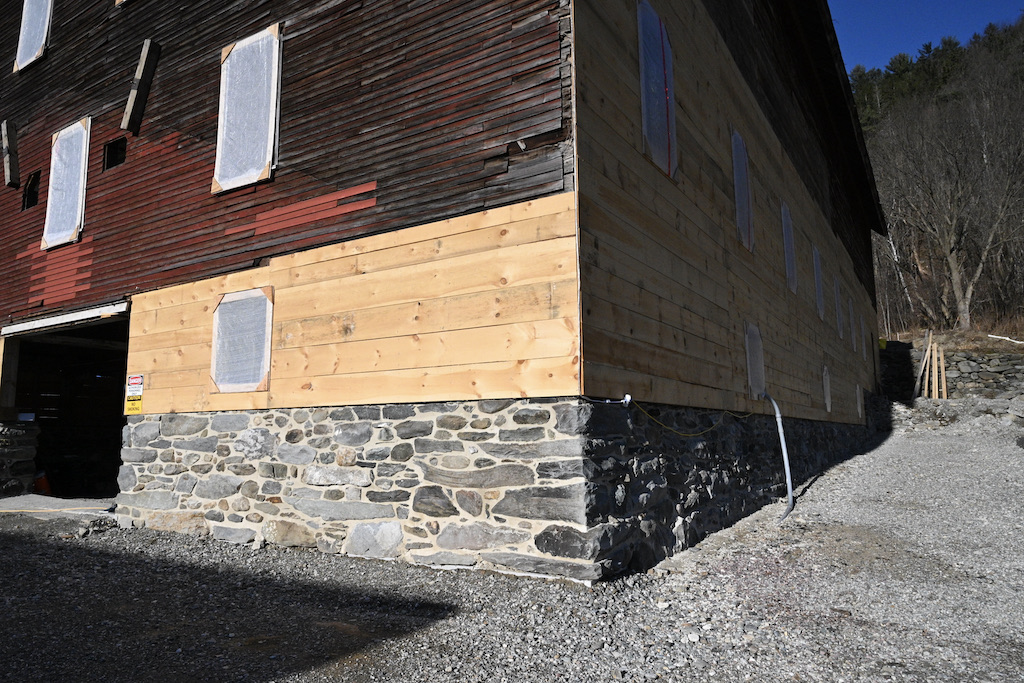
The walls are one of the most striking recent updates. Goodbye to rotting and warped wood, hello to beautiful new boards! The new wall sheathing was milled right on site, and the wood came from just down the road on local land. As with all facets of this project, lead restorationists Eliot and Dan preserved the original timber whenever possible—the lower walls now reflect a beautiful patchwork of old and new.
Floors
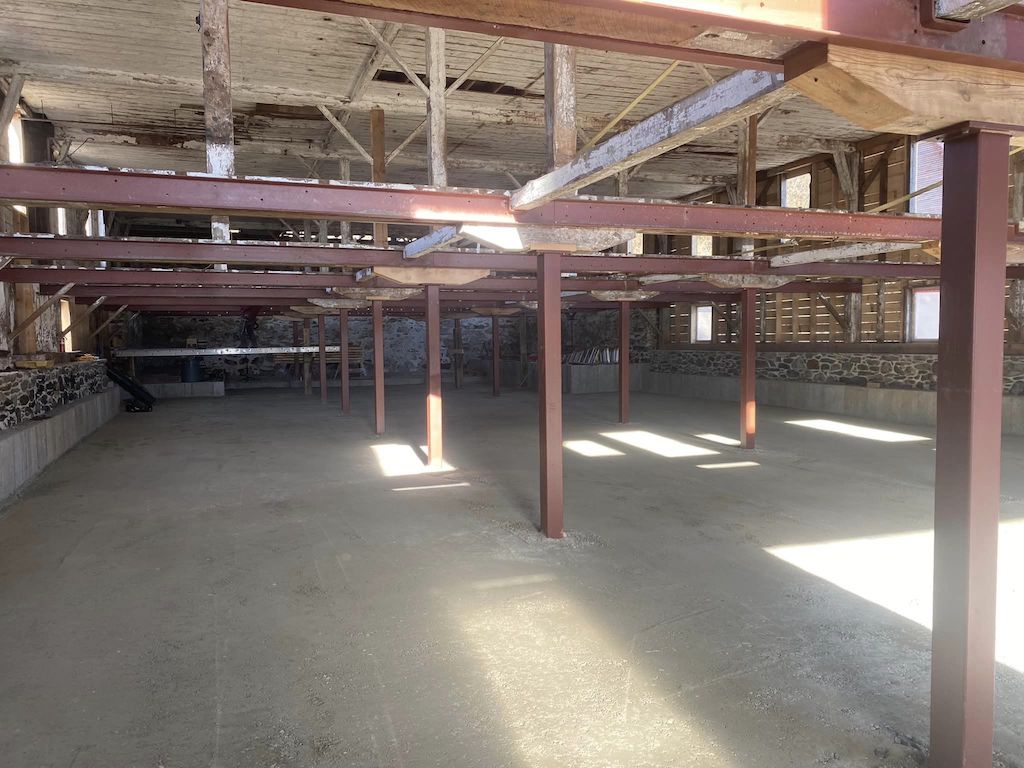
Wondering what on earth we mean by a “layer cake” of ground level flooring? Well, it’s a pretty apt metaphor! The new floor is comprised of multiple layers of unique recycled materials. At the very bottom sits about one foot of crushed and reused concrete from the original flooring (let’s hear it for carbon reduction!).
Above that, Bill and Billy Atwood (the excavation team) added a fascinating material called Glavel, sourced from Essex Junction. Glavel is a recycled foam and glass aggregate that resembles coal and looks like it weighs a ton, but is light as a feather. They installed and tamped about a foot of the material.
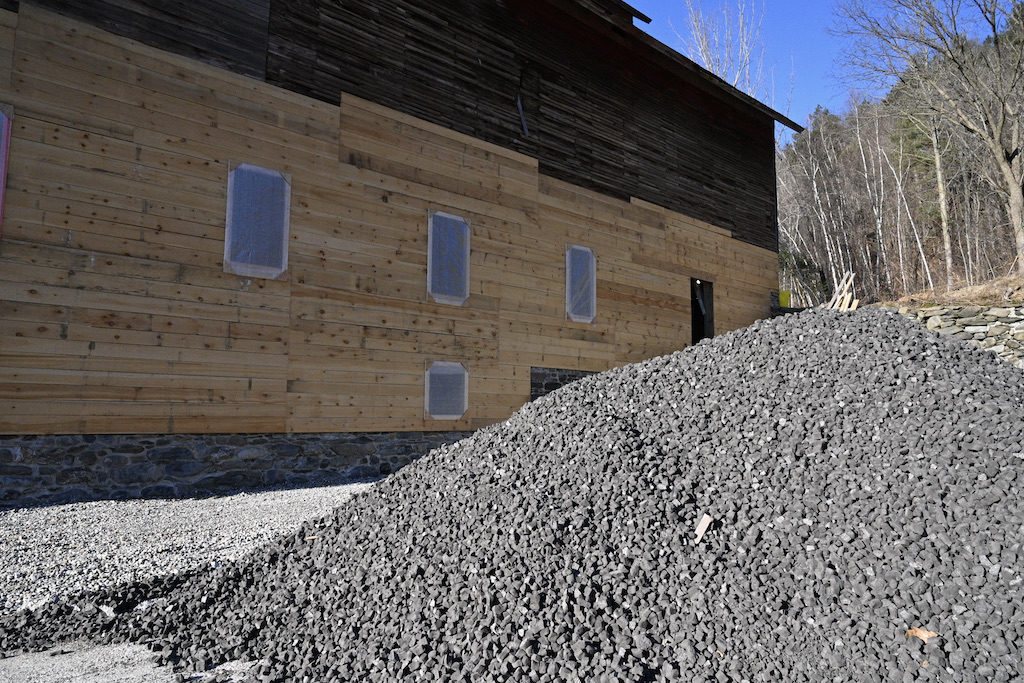
The icing on the cake is plant mix gravel (a driveway-type material) that will serve as a temporary floor surface until the ground level is ready for the final concrete floor pour.
Up on the stock level, Eliot and Dan have already started laying down the plywood subfloor. This means that it’s possible to stand on a portion of the first floor for the first time in many months.
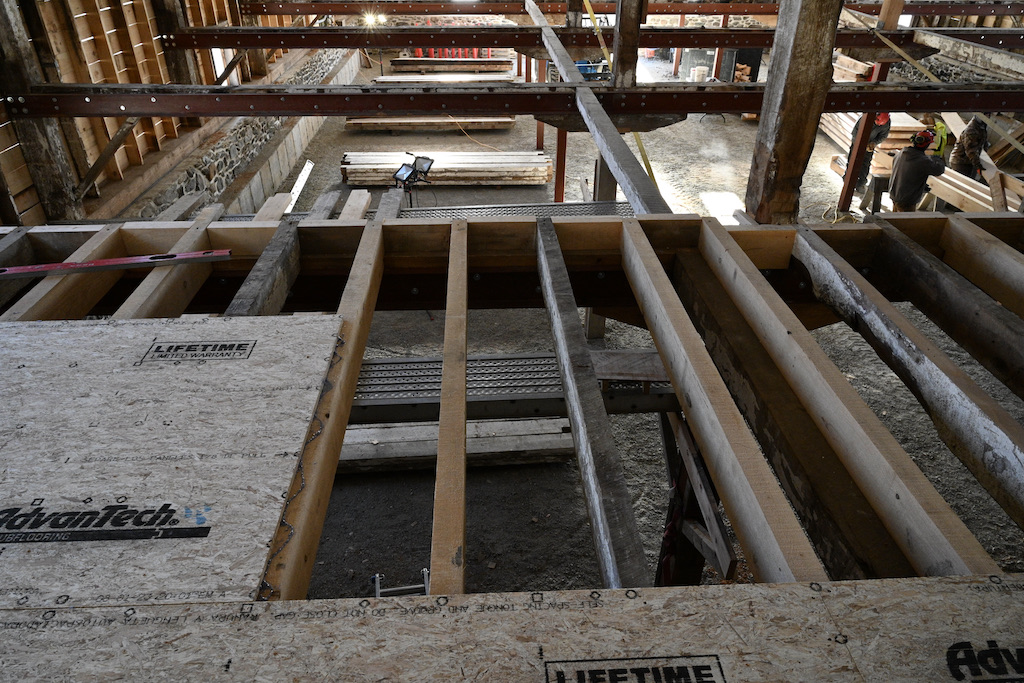
Concrete mass
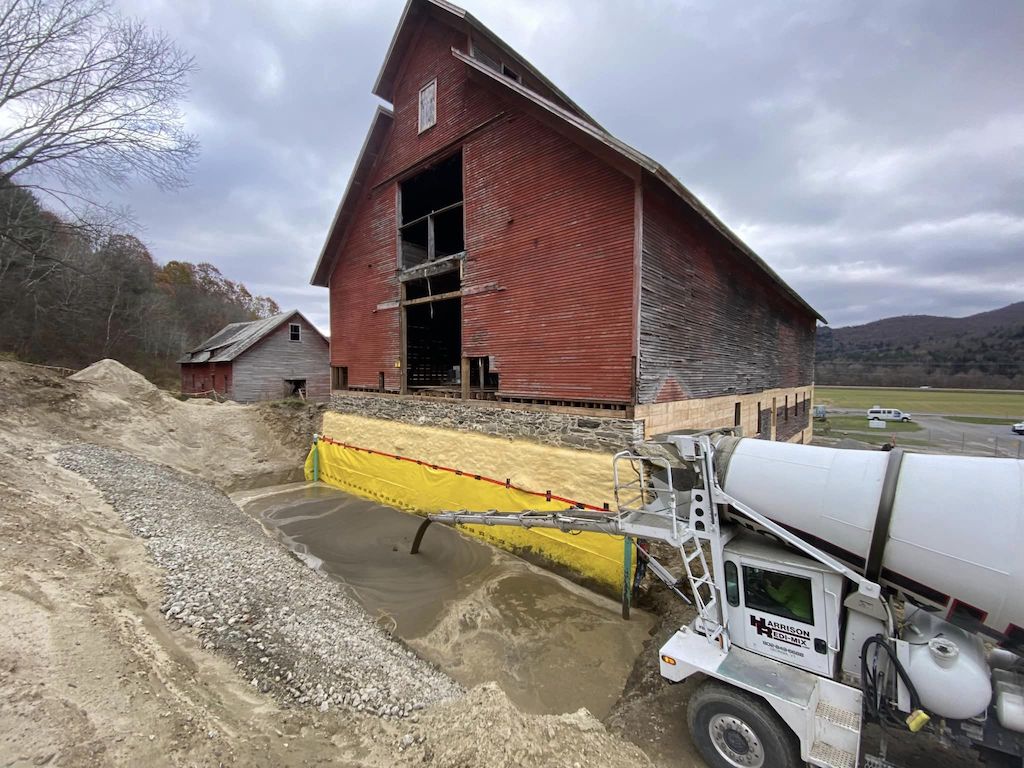
If you’ve been following along, you know that the barn’s primary issue was downhill pressure from the hill the barn is built into. To ensure that the Leaning Tower of Pisa effect doesn’t continue to plague the structure, the team created a huge mass of low strength concrete (a substance typically used for backfill) behind the barn to resist future downhill pressure.
Bill and Billy started by digging a deep moat to create a sizable gap between the back of the barn and the hillside. Then they sprayed the portion of the stone that will be underground with foam insulation.

Next, they used 54 mixer loads of flowable fill material to fill in the moat. Flowable fill is similar to concrete but, as its name suggests, behaves more like a liquid than standard concrete, allowing it to more easily fill empty spaces.

Another fun discovery

Remember when Bill and Billy unexpectedly unearthed the beautiful original marble threshold? Well, they’re back at it again with the fun discoveries! They recently uncovered the old milkhouse foundation that sits to the east side of the barn. Could buried riches be their next find?
What’s next?
Dan and Eliot are right on target for where they want the project to be at this time of year. That means that things are about to quiet down for the first time since they ramped up in the spring. In fact, this may be our last substantial update until work starts back up in April. Thank you so much for following along on this restoration journey!
You can tune into the following channels to know when we start posting more updates (or just stay tuned to VYCC and Building Heritage happenings in general): VYCC Instagram (@thevycc), VYCC Facebook, VYCC e-newsletter, and Building Heritage Facebook. And as always, a thank you as massive at the East Monitor Barn itself goes out to everyone who’s had a hand in this exciting restoration so far.

Wonderful work thus far! Looks fantastic